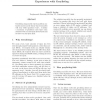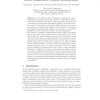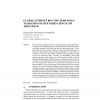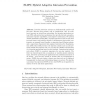5934 search results - page 1171 / 1187 » Detecting a Network Failure |
CEAS
2005
Springer
15 years 4 months ago
2005
Springer
Greylisting temporarily rejects mail from unknown sources on the theory that real mailers will retry while spamware won’t. I outline a taxonomy of greylisters and report some st...
CRYPTO
2005
Springer
15 years 4 months ago
2005
Springer
In the setting of secure multiparty computation, a set of parties wish to jointly compute some function of their inputs. Such a computation must preserve certain security propertie...
108
click to vote
IFIP
2005
Springer
15 years 4 months ago
2005
Springer
Nearly all network applications rely on the global Internet routing infrastructure to compute routes and deliver packets. Unfortunately, false Internet routes can be maliciously in...
RAID
2005
Springer
15 years 4 months ago
2005
Springer
Intrusion detection systems are fundamentally passive and fail–open. Because their primary task is classification, they do nothing to prevent an attack from succeeding. An intru...
ISLPED
2004
ACM
15 years 4 months ago
2004
ACM
Microprocessor designers use techniques such as clock gating to reduce power dissipation. An unfortunate side-effect of these techniques is the processor current fluctuations th...




